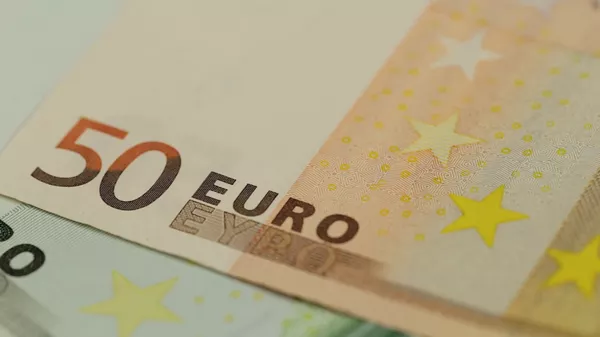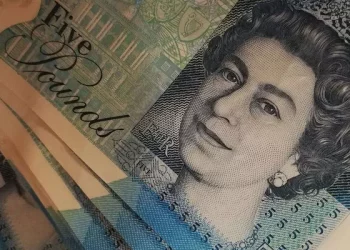In the ever-evolving landscape of global economics, exchange rates play a pivotal role in shaping international trade, investment, and financial stability. For individuals and businesses engaged in cross-border transactions, staying informed about currency exchange rates is essential. In this article, we delve into the intricacies of the current Euro (EUR) exchange rate, with a specific focus on its implications for converting 20 Euros to Indian Rupees (INR).
The Foundation: What Drives Exchange Rates?
Before delving into the specifics of the Euro to Indian Rupee exchange rate, it is crucial to understand the fundamental factors that influence exchange rates. Exchange rates are determined by the foreign exchange market, where currencies are bought and sold. Several factors contribute to the fluctuation of exchange rates, including:
Economic Indicators: Key economic indicators such as GDP growth, inflation rates, and employment figures can significantly impact a country’s currency value.
Interest Rates: Central banks set interest rates, and higher rates often attract foreign capital, leading to an appreciation of the currency.
Political Stability: Political stability and effective governance contribute to a positive economic environment, positively influencing a currency’s value.
Market Sentiment: Investor perception, geopolitical events, and overall market sentiment can lead to short-term fluctuations in exchange rates.
Trade Balances: The balance of trade, which compares a country’s exports to its imports, also plays a role. A trade surplus tends to strengthen a currency, while a deficit may lead to depreciation.
Now that we have established the foundational factors, let’s zoom in on the Euro and Indian Rupee.
Euro in Focus: A Brief Overview
The Euro, introduced in 1999, has become one of the world’s major reserve currencies and the second-most traded currency after the United States Dollar (USD). Used by 19 of the 27 European Union (EU) member countries, the Euro’s value is influenced by the economic performance of the Eurozone, comprised of these nations.
The European Central Bank (ECB) plays a crucial role in shaping Eurozone monetary policy, impacting interest rates and, consequently, the Euro’s exchange rate. Investors closely monitor ECB decisions, economic indicators, and geopolitical events to anticipate Euro movements.
Indian Rupee Unveiled: Navigating the Complex Terrain
On the other side of our currency conversion equation, we find the Indian Rupee, the official currency of the Republic of India. Governed by the Reserve Bank of India (RBI), the Rupee’s value is subject to a myriad of factors unique to the Indian economic landscape.
India’s economic growth, inflation rates, and fiscal policies all contribute to the Rupee’s valuation. Additionally, the country’s trade balance, foreign exchange reserves, and geopolitical stability play pivotal roles in shaping the Rupee’s standing in the global foreign exchange market.
The Current Landscape: Euro to Indian Rupee Exchange Rate Analysis
At the time of writing, the Euro to Indian Rupee exchange rate stands at 90.34. At the current exchange rate, 20 euros can be exchanged for approximately 1806.88 Indian rupees.To comprehend the implications of this exchange rate, we must consider recent developments influencing both the Eurozone and the Indian economy.
Eurozone Economic Outlook: Navigating Uncertainties
The Eurozone has faced its share of challenges in recent times. The aftermath of the global financial crisis, followed by the sovereign debt crisis, tested the resilience of the Euro and the economic cohesion of its member states. In response, the ECB implemented various monetary policies, including low-interest rates and quantitative easing, to stimulate economic growth.
See Also:Current EUR Exchange Rate: What Is 12 Euros in Pounds?
Global Influences: The Ripple Effect of International Events
In the interconnected world of finance, international events can send ripples across currency markets. Geopolitical tensions, trade agreements, and global economic trends can impact both the Euro and the Indian Rupee. Analyzing these global influences provides a comprehensive perspective on the factors shaping the current exchange rate scenario.
Strategies for Exchange Rate Management: Mitigating Risks and Capitalizing on Opportunities
For individuals and businesses involved in international transactions, managing currency exchange rate risks is paramount. Various strategies can be employed to mitigate risks and capitalize on favorable exchange rate movements. These strategies include:
Forward Contracts: Entering into forward contracts allows individuals and businesses to lock in a specific exchange rate for a future date, mitigating the impact of currency fluctuations.
Hedging Instruments: Financial instruments such as options and futures can be used to hedge against adverse currency movements.
Diversification: Holding a diversified portfolio of currencies can help spread risk and minimize the impact of exchange rate fluctuations.
Stay Informed: Regularly monitoring economic indicators, central bank decisions, and geopolitical events is essential for making informed decisions in the volatile world of currency exchange.
The Future Outlook: Anticipating Changes in the Euro to Indian Rupee Exchange Rate
Predicting future exchange rate movements is a challenging task, given the multitude of factors at play. However, informed analysis based on economic indicators, geopolitical developments, and global trends can provide valuable insights into potential shifts in the Euro to Indian Rupee exchange rate.
Conclusion: Navigating the Complex Web of Currency Exchange
In conclusion, understanding the current Euro exchange rate and its impact on converting 20 Euros to Indian Rupees requires a multifaceted analysis. The Euro and the Indian Rupee, each influenced by a unique set of economic, political, and global factors, contribute to the dynamic nature of the exchange rate landscape.
For individuals and businesses engaged in international transactions, staying informed, employing risk management strategies, and adapting to changing market conditions are essential. The current exchange rate of 20 Euros to Indian Rupees is a reflection of the broader economic dynamics at play, and a comprehensive understanding of these factors is crucial for making informed financial decisions in the global marketplace.
Related Topics:
Current EUR Exchange Rate: What Is 500 Euros in Dollars?
Current EUR Exchange Rate: What Is 30 Euros in Pounds?
Current EUR Exchange Rate: What Is 140 Euros in Pounds



























